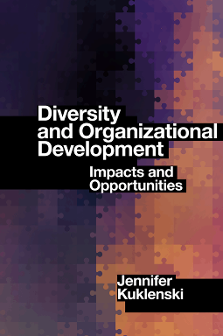DeGraffenreid v. General Motors
, 67–68
Demographic shifts
, 1, 11, 16
international migration trends
, 13–16
international population trends
, 11–13
Dimensions of national culture
, 38–46
collectivism
, 40–42
femininity
, 43–44
individualism
, 40–42
indulgence vs. restraint
, 45–46
long-term orientation
, 44–45
masculinity
, 43–44
power distance
, 38–40
short-term orientation
, 44–45
uncertainty avoidance
, 42–43
Dimensions of organizational culture
, 105–106
Discretionary responsibilities
, 84
Diversity
, 27–28, 30, 113
attributes
, 5, 35, 67–68
characteristics
, 29–30
in communication
, 6, 46, 49
comparative definitions
, 29–30
competency
, 88–89
definitions
, 29
diversity-related conflict
, 92–93
illustrative example
, 33–34
imperative
, 1–3
inclusion
, 116, 120–121
initiatives
, 99, 115–116
interacting attributes
, 34–36
in interpersonal relationships
, 56–58
levels
, 32–36
linking diversity and inclusion with corporate social responsibility
, 82–85
multinational definition
, 30–32
organizational diversity
, 113–116
organizational performance
, 77–82
reflecting on diversity’s complexity
, 36
training
, 7–8, 91
tree and sample attributes
, 33
value of
, 77–82
Diversity and inclusion (D&I)
, 1, 77, 87–88, 118
benefits
, 2–3, 7
commitment
, 85–86
efforts
, 31–32
embedding D&I in CSR strategy
, 84–85
initiatives
, 2
organizational development approach to
, 3–4
as value-adding activity
, 120–121
Diversity and inclusion organizational development (D&IOD)
, 4, 104
Diversity in context
global demographic shifts
, 11–16
national labor force trends
, 16–24
Diversity management
, 7–8, 28–29, 87, 93
recruiting for diversity
, 87–89
retaining diverse employees
, 89–93
Diversity Prediction Theorem
, 80
